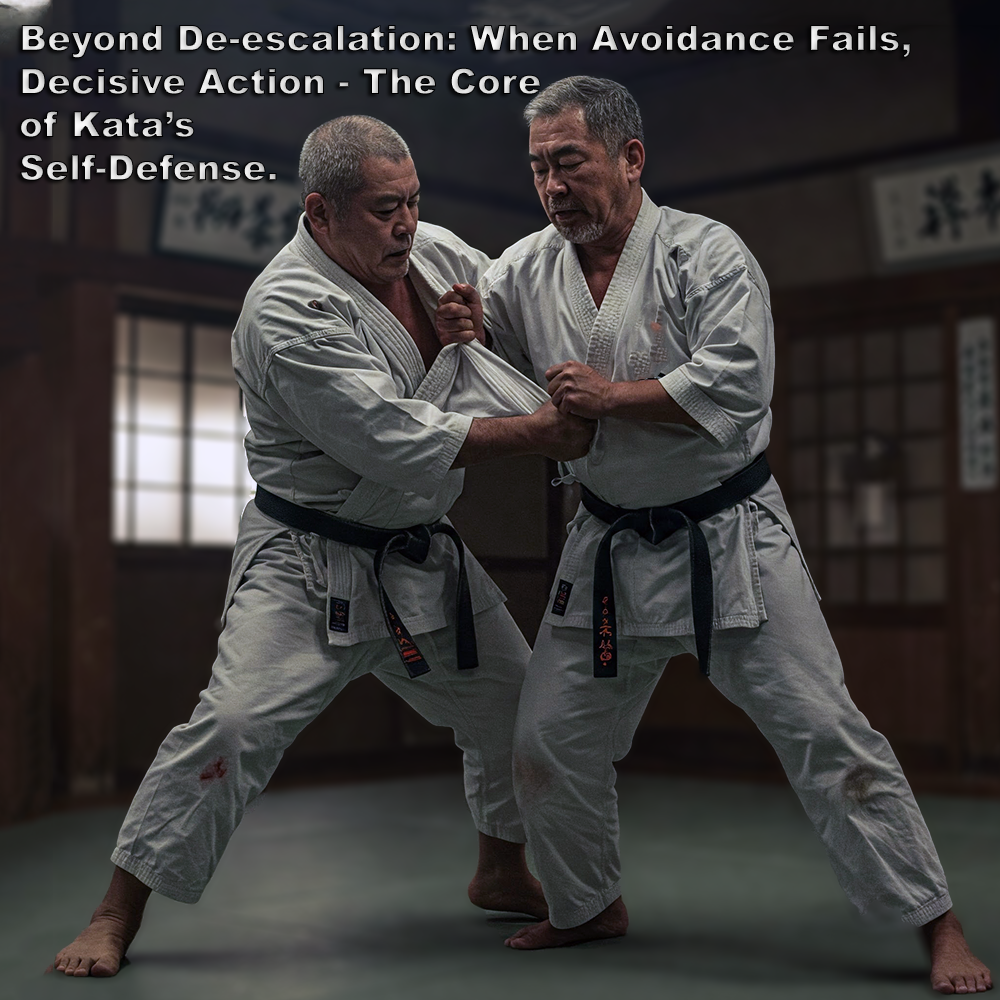
Beyond De-escalation: When Avoidance Fails, Decisive Action – The Core of Kata’s Self-Defense.
Posted by ADAM CARTER on JUL 01, 2025

Beyond De-escalation: When Avoidance Fails, Decisive Action – The Core of Kata’s Self-Defense.
(Approx 1 minute 50 second read)
Most followers of this Page understand that self-defense should always prioritize non-physical approaches first. There have to be alternatives, right?
However, I have always taught my students that if avoidance fails, they must quickly take control – or at least try to. I obviously hope they never have to defend their lives or those of a loved one.
But that doesn’t mean we don’t train for it. For us, the two-person drills embedded in kata hold the keys.
To extract these lessons, we have to step into the minds of the pioneers – the creators of the kata – and understand the principles they left behind.
Beyond de-escalation and escape, we must be able to neutralize the threat with immediate and decisive action. Once a threat is recognized, it must be rendered incapable – finished – so that it no longer remains.
To grasp this, we must see through the eyes of the kata’s creators. We must set aside our modern opinions and become that individual – the one who understood how to eliminate a threat efficiently.
Violent action is a difficult concept for many. Rightly so – we believe violence should be avoided whenever possible. We are taught to “rise above it.”
Yet the kata show us what works in the real world. The underlying theme is clear: violence, presented through different methods. Each kata carries the ‘story’ of an encounter and what worked for its creator.
For example, an arm-bar or joint-lock is not an end. It interrupts the threat for a moment – nothing more. Many applications fall into this category. They set up the real finishing move, which may or may not be shown in the kata. An incapacitated arm or leg may not end the fight, but it can create the chance to finish it – and escape.
The methods in kata are not meant to look pretty. They are not artistic poses or ways to constrain an opponent for any length of time. I mean, what happens when you release the constraint?
Yet the kata show us, that the movements are meant to eliminate the threat. The methods will work if used with intent and decisiveness, with no concern for “form”.
Fast, effective function is what prevails when lives are on the line. That must always guide how we study and apply what the kata teach.
I have said many times: the kata are our textbooks. We must learn how to read them properly – so when the moment comes, we know exactly how to act.
Yes, sometimes we must fight. For those who keep asking me to “enlighten them” – the answer is in the textbooks: the kata.
Written by Adam Carter – Shuri Dojo
